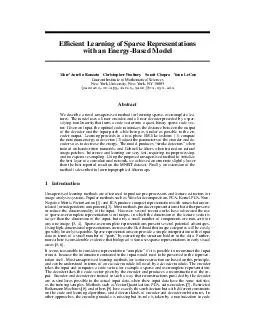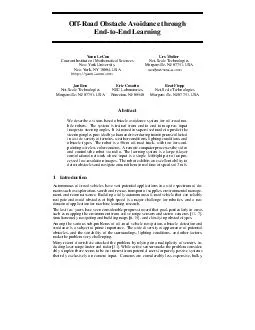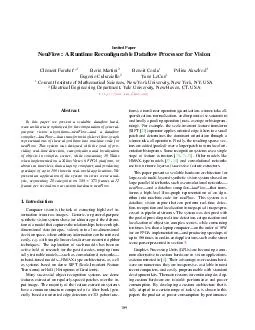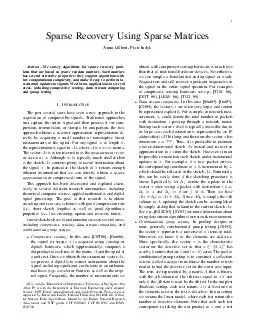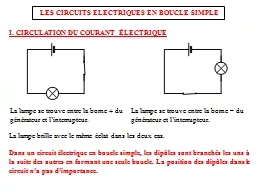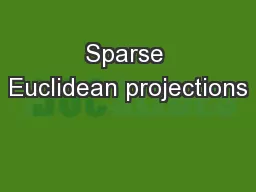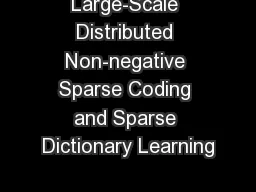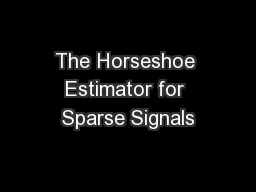PDF-Efcient Learning of Sparse Representations with an EnergyBased Model MarcAurelio Ranzato
Author : alexa-scheidler | Published Date : 2014-12-27
nyuedu Abstract We describe a novel unsupervised method for learning sparse overcomplete fea tures The model uses a linear encoder and a linear decoder p receded
Presentation Embed Code
Download Presentation
Download Presentation The PPT/PDF document "Efcient Learning of Sparse Representatio..." is the property of its rightful owner. Permission is granted to download and print the materials on this website for personal, non-commercial use only, and to display it on your personal computer provided you do not modify the materials and that you retain all copyright notices contained in the materials. By downloading content from our website, you accept the terms of this agreement.
Efcient Learning of Sparse Representations with an EnergyBased Model MarcAurelio Ranzato: Transcript
Download Rules Of Document
"Efcient Learning of Sparse Representations with an EnergyBased Model MarcAurelio Ranzato"The content belongs to its owner. You may download and print it for personal use, without modification, and keep all copyright notices. By downloading, you agree to these terms.
Related Documents

